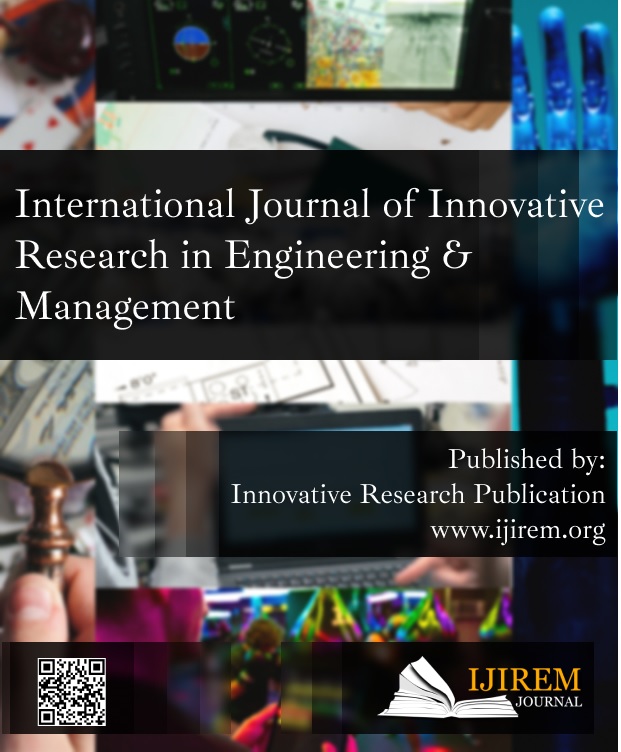Machine Learning: Relevant Characteristics and Instances
Keywords:
Computers, Machine Learning, Relevant Examples, Relevant FeaturesAbstract
Modelling is the process by which electronics learn how to perform tasks without ever being explicitly instructed how to do so. It incorporates systems learning from data to do certain tasks. For simple occupations entrusted to computers, it is possible to build algorithms that direct the system how to do all appropriate steps to solve the problem at hand; no learning is needed on the computer's part. Manually developing the techniques necessary for more complicated operations may be tough. In actuality, rather than defining normal engineers define each essential step, supporting the computer in designing its own methodology may prove to be more effective. Computer science (ML) is a sort of intelligent machines (AI) that enables software programs to improve their prediction accuracy without being expressly designed to do so. In order to forecast new target value, computers utilize past data as input. We examine current machine learning research on approaches for coping with large datasets which include a majority of irrelevant information in this article. The two key issues we address are the difficulty in selecting relevant qualities and the difficulty in locating relevant cases. We take a look at the progress that has been accomplished. Both empirically - based study on these difficulties has been done in machine learning, and we present a general method for analyzing diverse techniques. We'll end with a few last remarks. The challenges of ongoing work in the area.
Downloads
References
. Mahdavinejad MS, Rezvan M, Barekatain M, Adibi P, Barnaghi P, Sheth AP. Machine learning for internet of things data analysis: a survey. Digital Communications and Networks. 2018.
. Liu Y, Zhao T, Ju W, Shi S, Shi S, Shi S. Materials discovery and design using machine learning. Journal of Materiomics. 2017.
. Maxwell AE, Warner TA, Fang F. Implementation of machine-learning classification in remote sensing: An applied review. International Journal of Remote Sensing. 2018.
. Qiu J, Wu Q, Ding G, Xu Y, Feng S. A survey of machine learning for big data processing. Eurasip Journal on Advances in Signal Processing. 2016.
. Bottou L, Curtis FE, Nocedal J. Optimization methods for large-scale machine learning. SIAM Review. 2018.
. Burrell J. How the machine ‘thinks’: Understanding opacity in machine learning algorithms. Big Data Soc. 2016;
. Ciliberto C, Herbster M, Ialongo AD, Pontil M, Rocchetto A, Severini S, et al. Quantum machine learning: A classical perspective. Proceedings of the Royal Society A: Mathematical, Physical and Engineering Sciences. 2018.
. Schuld M, Sinayskiy I, Petruccione F. An introduction to quantum machine learning. Contemp Phys. 2015; [9]. Lary DJ, Alavi AH, Gandomi AH, Walker AL. Machine
learning in geosciences and remote sensing. Geosci Front. 2016;
. Kavakiotis I, Tsave O, Salifoglou A, Maglaveras N, Vlahavas I, Chouvarda I. Machine Learning and Data Mining Methods in Diabetes Research. Computational and Structural Biotechnology Journal. 2017.
